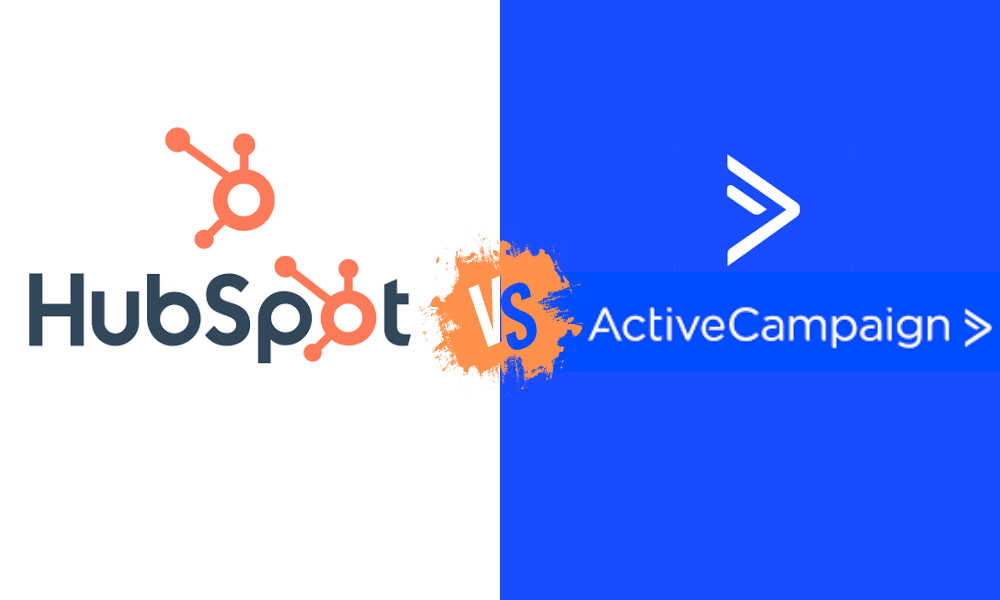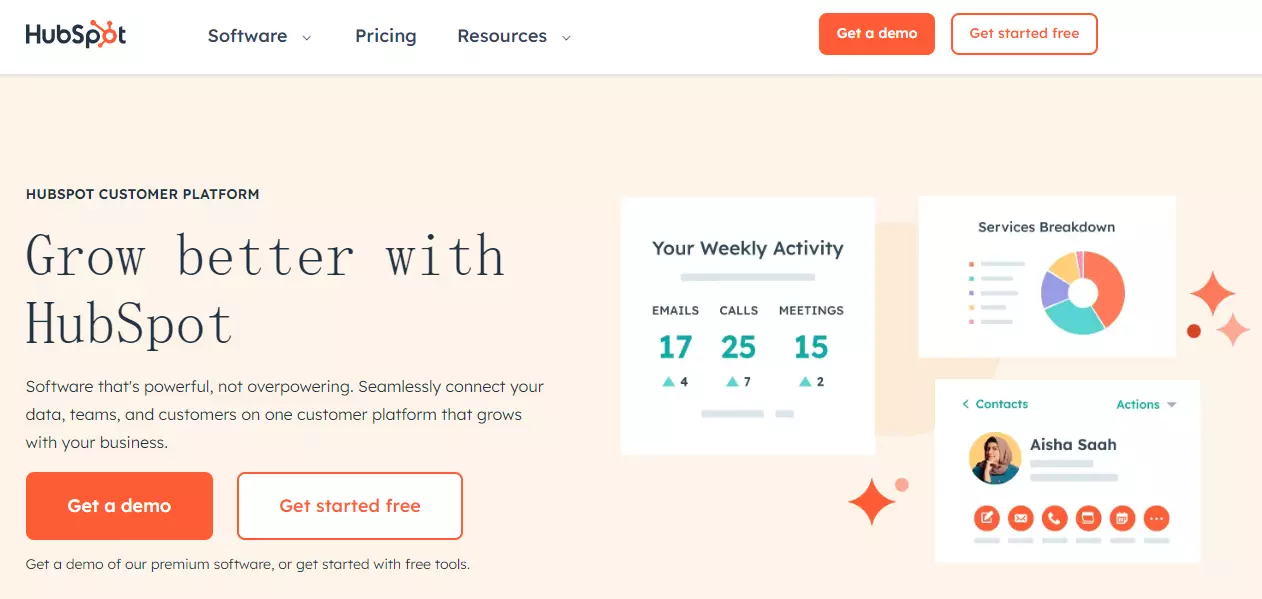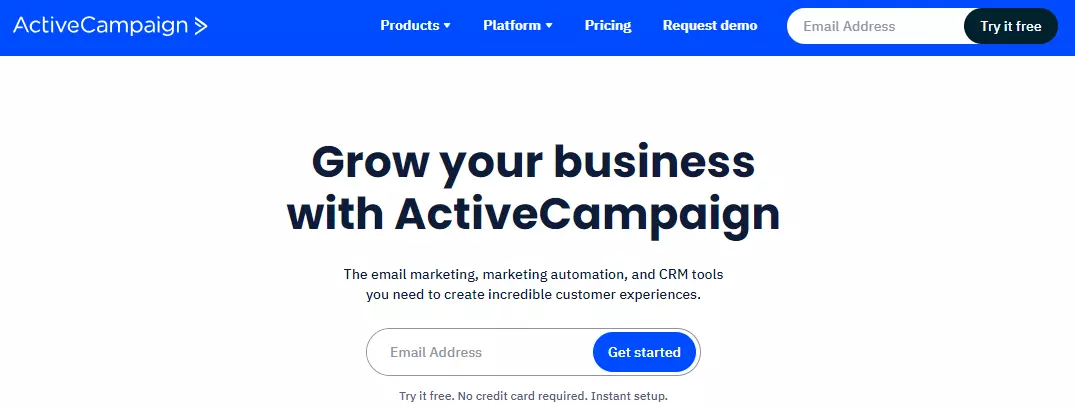
Email marketing remains one of the most potent tools for connecting with customers, and today's market offers a plethora of email marketing software options. Among them, ActiveCampaign and HubSpot stand out, offering robust features for segmenting audience lists, contact management, and tracking engagement metrics.
However, discerning which platform suits your business best can be daunting.
In this blog, we will offer an apples-to-apples comparison to provide clarity and facilitate informed decision-making.
What is HubSpot?

HubSpot is a comprehensive CRM platform, offering a suite of products dedicated to marketing, sales, content management, and customer service.
Built as an integrated system, each Hub within HubSpot links to a unified database, ensuring seamless connectivity whether you choose one or the entire suite.
As your business grows, HubSpot provides the foundation with interconnected data, facilitating the creation of compelling customer experiences at scale.
You can also read What is HubSpot for more detailed information about this platform.
What is ActiveCampaign?

In contrast, ActiveCampaign emerges as a dynamic Customer Experience Automation platform empowering businesses to foster connections and interactions with their customers.
This platform enhances customer experiences by automating various marketing, sales, and support processes behind the scenes.
While ActiveCampaign offers a core product, it also provides additional specialty sales and service features that can be incorporated as needed.
For a deeper dive into this popular platform, read our guide on ActiveCampaign Review.
ActiveCampaign Vs Hubspot: Feature by Feature
Marketing Automation
Both platforms excel in marketing automation, each with unique strengths.
ActiveCampaign stands out for its intricate, personalized email marketing campaigns. Leveraging advanced targeting features powered by machine learning, ActiveCampaign ensures messages reach the right audience at precisely the right moment.
In contrast, HubSpot offers a diverse array of automation tools, encompassing options for social media and SEO. This makes HubSpot an optimal choice for businesses seeking a comprehensive solution.
Email Templates and Customization
ActiveCampaign boasts over 250 pre-built email templates, offering users the flexibility to customize them using the intuitive drag-and-drop campaign builder. Additionally, ActiveCampaign caters to advanced users by enabling the creation of text-only and custom HTML emails.
Users can leverage the campaign builder to schedule emails, configure email tracking, and adjust trigger settings. However, some users have expressed frustration regarding the inability to add multiple email addresses for leads, a feature available in HubSpot.
HubSpot facilitates the creation of professional email campaigns across multiple devices. Similar to ActiveCampaign, HubSpot provides free templates that users can customize using its drag-and-drop editor.
Moreover, users can utilize HubSpot's AI writing feature to generate emails based on prompts and subsequently analyze email results connected to their website or social media channels, providing insights into email health scores. HubSpot also offers in-app recommendations to help users avoid spam filters and enhance their email marketing results.
Integration and Scalability
Both platforms offer robust integration capabilities. ActiveCampaign seamlessly integrates with niche platforms and adapts to increasing complexity as businesses scale.
HubSpot boasts a vast ecosystem of integrations, allowing businesses to augment functionalities as they expand.
Advanced Reporting and Analytics
ActiveCampaign furnishes users with detailed analytics and reports on email campaigns, encompassing open and read trends and specific client responses to facilitate optimization and improve conversation rates.
Additionally, ActiveCampaign enables split testing for up to five emails simultaneously, enabling users to discern the most effective subject lines, email content, images, and CTAs for their audience lists. However, while all ActiveCampaign plans feature reporting capabilities, custom reporting is exclusive to users on the Enterprise plan.
HubSpot offers users a comprehensive view of campaign performance, allowing customization of dashboard content and side-by-side comparison of reports. Users can access reports in various formats, including tables, pie charts, and scatter plots, and can designate report accessibility as public or private.
Notably, custom reports are available solely to users on the Professional plan, with a limit of 100. Unlike ActiveCampaign, lower-tier HubSpot subscribers do not have access to A/B testing functionality.
Pricing and ROI
Cost considerations are paramount in any tech stack decision. ActiveCampaign presents a more budget-friendly option, delivering a high ROI, particularly for businesses prioritizing email marketing.
HubSpot entails a larger investment but offers a broader range of functionalities and ROI across multiple business functions.
Conclusion: ActiveCampaign Vs Hubspot
In making a well-informed decision between ActiveCampaign and HubSpot, it's crucial to delineate your digital transformation objectives and grasp the strengths of each platform in alignment with those goals.
If your aim is to find a comprehensive tool encompassing email marketing alongside a plethora of other marketing and customer relationship management features, HubSpot is as an ideal choice.
Conversely, if your preference leans towards a platform that prioritizes streamlined email marketing functionality without unnecessary clutter, ActiveCampaign proves to be the superior option.

